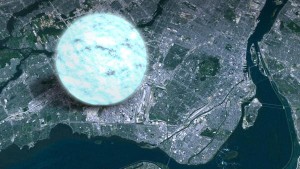 What is left after a star explodes and dies? The answer is a neutron star.
What is left after a star explodes and dies? The answer is a neutron star.
Dr. Victoria Kaspi, professor of astrophysics and cosmology at McGill University, is piecing together the structure of a specific type of neutron star called a magnetar.
Dr. Victoria Kaspi is the Lorne Trottier Chair in Astrophysics and Cosmology at McGill University in Montreal, where her research focuses on observational studies of neutron stars. Her research group’s discovery of a new phenomenon in a neutron star was detailed in a paper published last year in the journal Nature. She holds a PhD from Princeton University.
Dr. Victoria Kaspi – Neutron Star Movement
You’ve probably heard of the ultra-dense objects in space known as black holes. But what about the next-densest objects, neutron stars?
These exotic stellar bodies are left behind after massive stars die and explode. A typical neutron star packs as much mass as half-a-million Earths within a diameter of just 20 kilometers. One type of neutron star is called a magnetar. A magnetar’s magnetic field is so powerful that, if one were located at the distance of the Moon, it could wipe clean a credit card magnetic strip here on Earth.
The internal structure of neutron stars is a long-standing puzzle. The matter inside them is subject to forces so intense that we can’t re-create them in laboratories on Earth.
Neutron stars also rotate very rapidly, often many times per second. Sometimes a star’s rotation suddenly speeds up – an event known as a glitch. These spin-up glitches may indicate that these ultra-dense objects contain some form of liquid, likely a superfluid.
Our research group last year discovered a surprising new phenomenon: Using NASA’s Swift X-Ray telescope, McGill graduate student Rob Archibald observed a magnetar suddenly rotate slower.
Along with the sudden slowdown, which we dubbed an ‘anti-glitch,’ we detected a large increase in the X-ray output of the magnetar — telltale evidence of a major event inside or near the surface of the star.
The anti-glitch strongly suggests pockets of superfluid rotating at different speeds inside the star.
We hope this discovery will help scientists better understand interiors of these amazing objects – and understand the nature of matter in extreme environments.

